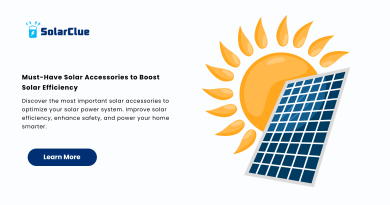What Are Solar On Grid Systems And How To Install It 3
Table of Contents Solar power systems, particularly solar on-grid systems, have emerged as a viable and increasingly popular alternative to non-renewable sources of energy. Considered environmentally friendly and cost-effective, these systems are transforming the energy landscape. But what exactly is a solar on-grid system, and how is it installed? Let’s delve into these questions. Solar On-Grid Systems, also known as grid-tied or grid-connected solar systems, comprise solar panels and a grid-tied inverter. These systems are connected to the public electricity grid and are used to generate power during sunlight hours. Unlike off-grid systems, they do not necessitate the use of battery storage as they remain connected to the grid. One of the key aspects of understanding this system is knowing how it works. A Solar On-Grid System generates power by converting sunlight captured by solar panels into electricity. This conversion is achieved through photovoltaic cells in the panels. The electricity generated is then converted from Direct Current (DC) to Alternating Current (AC) by an inverter. The AC electricity is distributed and used to run household appliances in real-time. Any surplus electricity generated is fed back into the grid. The appeal of solar on-grid systems lies in their incredible benefits. To start with, they provide a renewable source of energy, reducing dependence on fossil fuels and consequently lowering greenhouse gas emissions. Secondly, it’s a cost-effective solution, as it drastically reduces electricity bills. In some cases, utility companies will also pay you for the surplus power fed back into the grid. Moreover, they require less maintenance compared to off-grid solar systems as there are no batteries to look after. Before diving into the installation of a solar on-grid system, it’s paramount that professional experts conduct an analysis of the site. This analysis includes reviewing your monthly power usage, surveying the location to determine the amount of sunlight it receives, and examining the roof structure to ensure it can support the system. The first step in the installation process begins with placing the solar panels on the house roof. Panels are typically fastened onto roof racks, which are tilted at an angle optimal for sunlight exposure. Following this, the inverter is installed and connected with the solar panels. The inverter is often placed near the main power system to ensure easy access and maintenance. The next step involves the connection of the inverter to your property’s main distribution board. Here, a two-way meter is usually installed, which measures the power drawn from the grid and the power fed back. This is necessary to calculate your monthly electricity bill properly. The final step is connecting your system to the local grid. This requires authorization from your power company and will probably involve a detailed inspection to ensure the system complies with their regulations. Once approved, your system is ready to run, and you can start generating your own power. Maintenance of a solar on-grid system is relatively low fuss. Regular checks should be performed to ensure all components are working correctly. Cleaning the solar panels from dust and debris is essential for optimal performance. The inverter’s lifespan is typically 10–15 years, after which it may need replacement. Any issues or malfunctions should be dealt with by professional technicians. In conclusion, solar on-grid systems represent an exciting move towards sustainable and renewable sources of energy. Their minimal environmental impact and cost-efficiency make them an attractive choice for homeowners. Though the installation requires initial investment and careful planning, the long-term benefits certainly outweigh the initial outlay. With the threat of climate change, moving towards cleaner power sources has never been more critical, and solar on-grid systems fulfill this requirement brilliantly.Introduction
Definition of Solar On-Grid Systems
Working of a Solar On-Grid System
The Benefit of Using Solar On-Grid Systems
Installation of a Solar On-Grid System
Maintenance of Solar On-grid Systems
Conclusion



